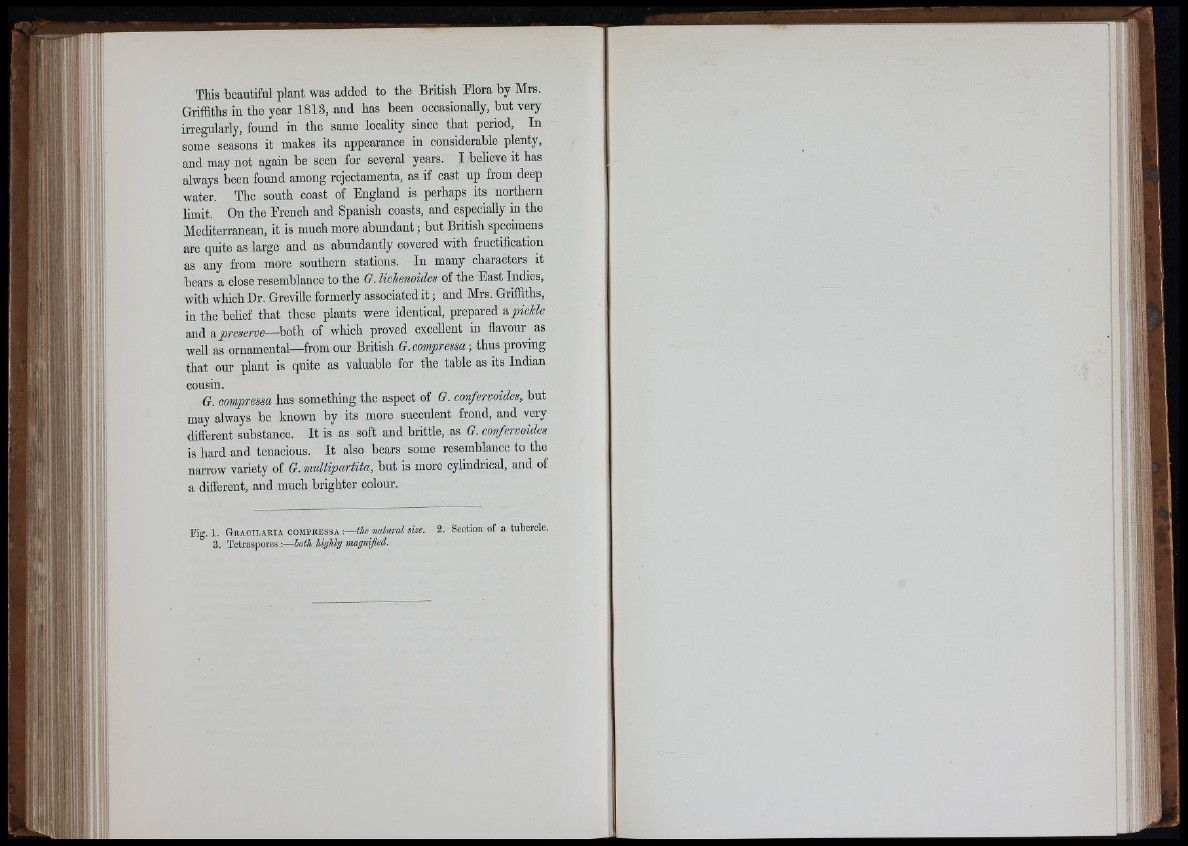
This beautiful plant was added to the British Flora by Mrs.
Griffiths in the year 1813, and has been occasionally, but very
irregularly, found in the same locality since that period, In
some seasons it makes its appearance in considerable plenty,
and may not again be seen for several years. I believe it has
always been found among rejectamenta, as if cast up from deep
water. The south coast of England is perhaps its northern
limit. On the French and Spanish coasts, and especially in the
Mediterranean, it is much more abundant ; but British specimens
are quite as large and as abundantly covered with fructification
as any from more southern stations. In many characters it
bears a close resemblance to the G. lichenoides of the East Indies,
with which Dr. Greville formerly associated it ; and Mrs. Griffiths,
in the belief that these plants were identical, prepared a pichle
a n d a /m e r a e—both of which proved excellent in flavour as
well as ornamental—from our British G. compressa ; thus proving
that our plant is quite as valuable for the table as its Indian
cousin.
G. compressa has something the aspect of G. confervoides, but
may always be known by its more succulent frond, and very
different substance. It is as soft and brittle, as G. confervoides
is hard and tenacious. I t also bears some resemblance to the
narrow variety of G. multipartita, but is more cylindrical, and of
a different, and much brighter colour.
Eig. 1. Gkacilakia compressa ;■
3. Tetraspores So«
—the natural size. 3. Section of a tubercle. It | l
11
ft